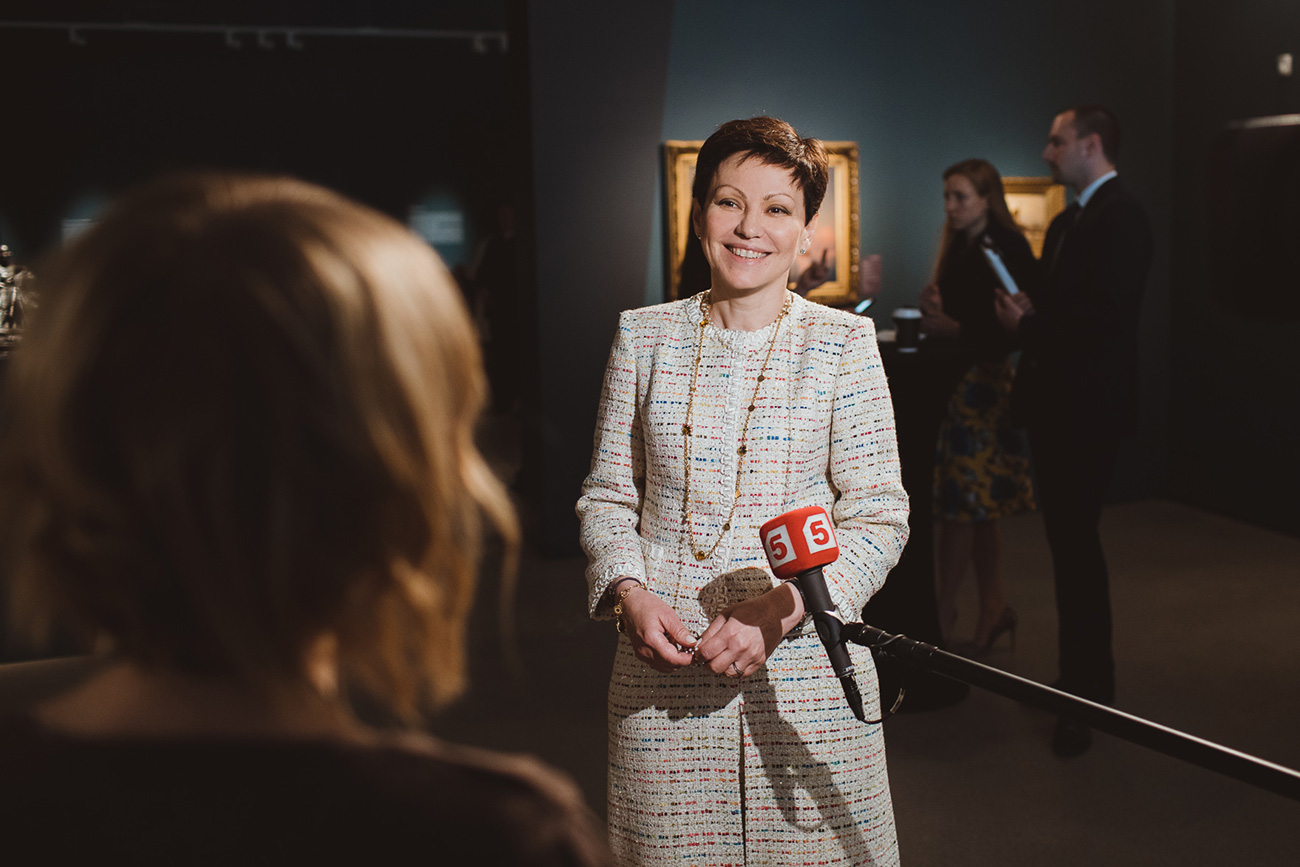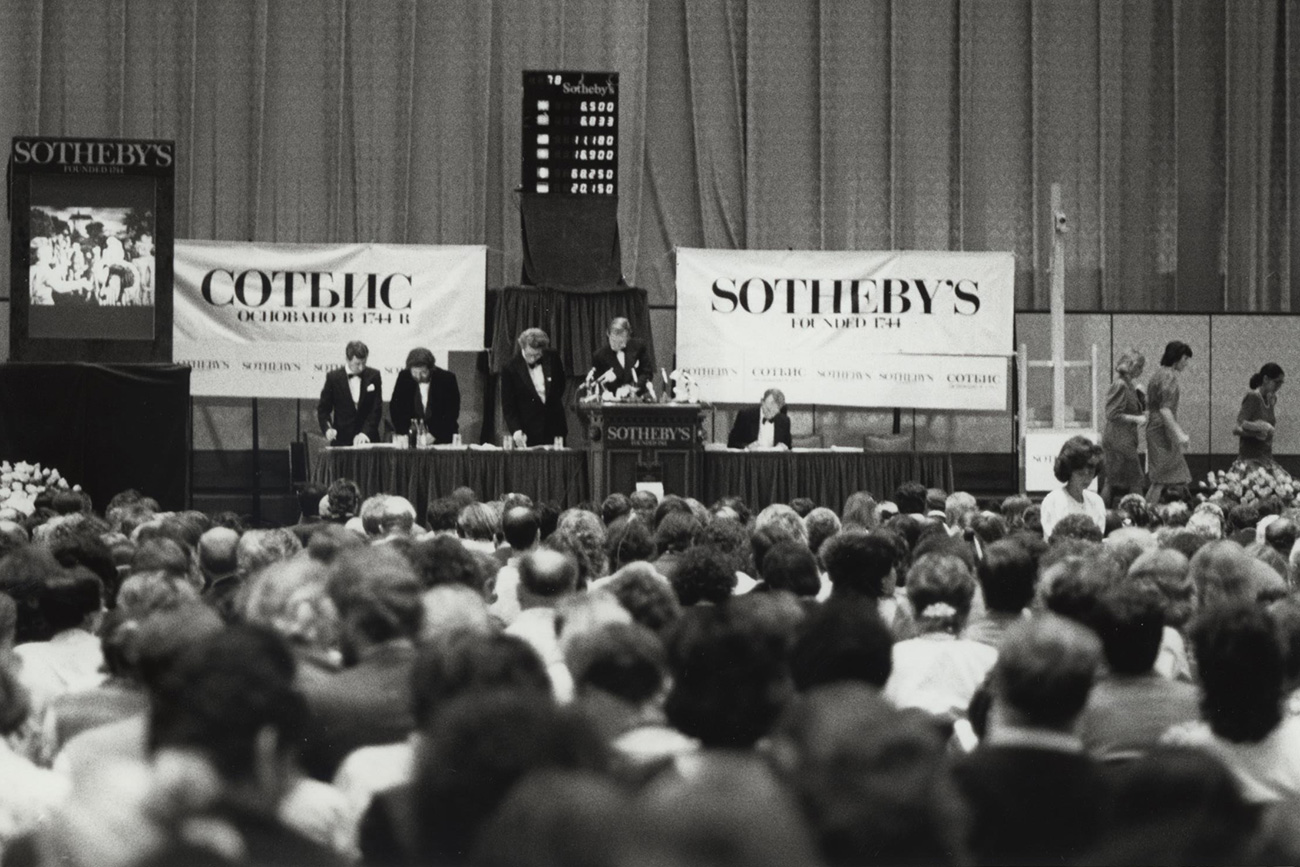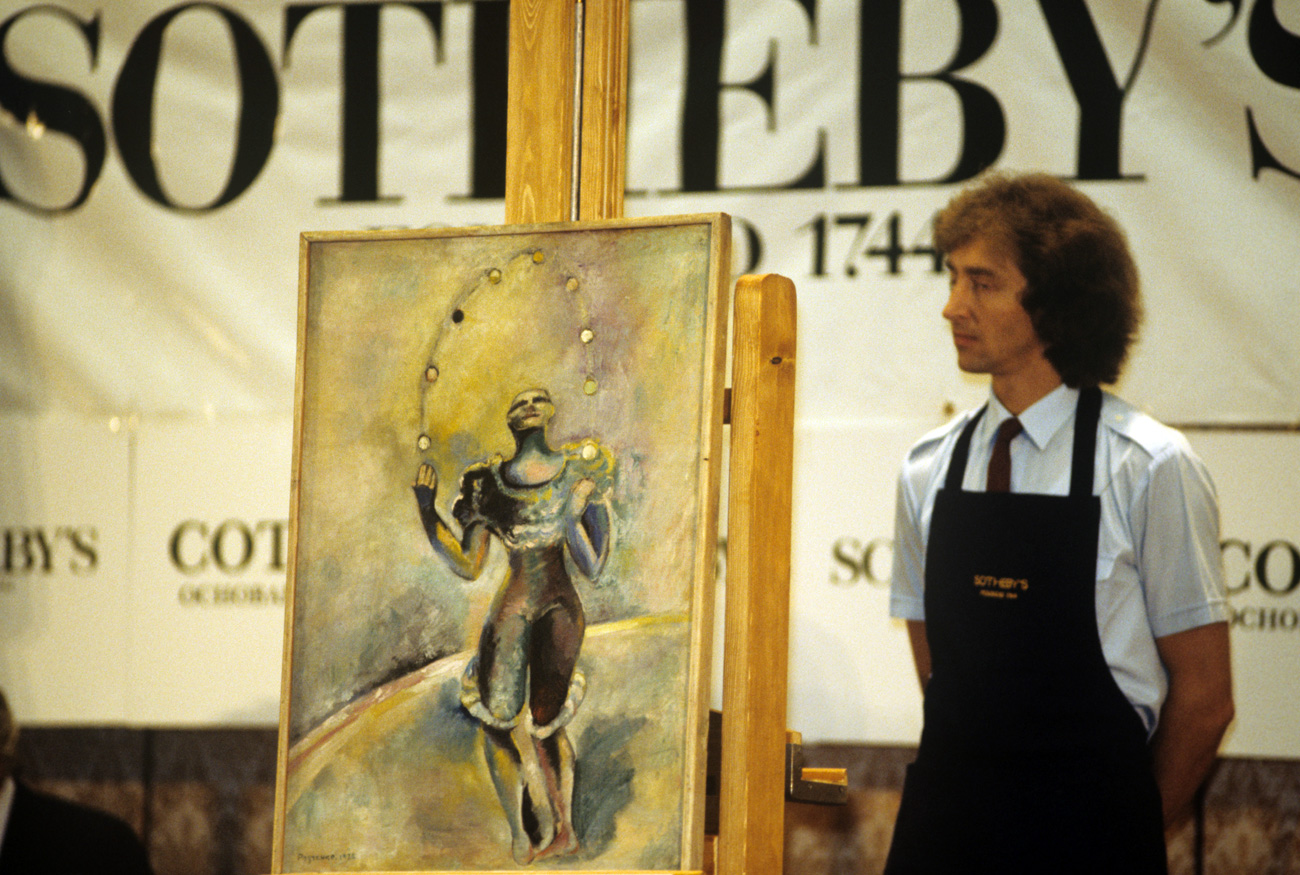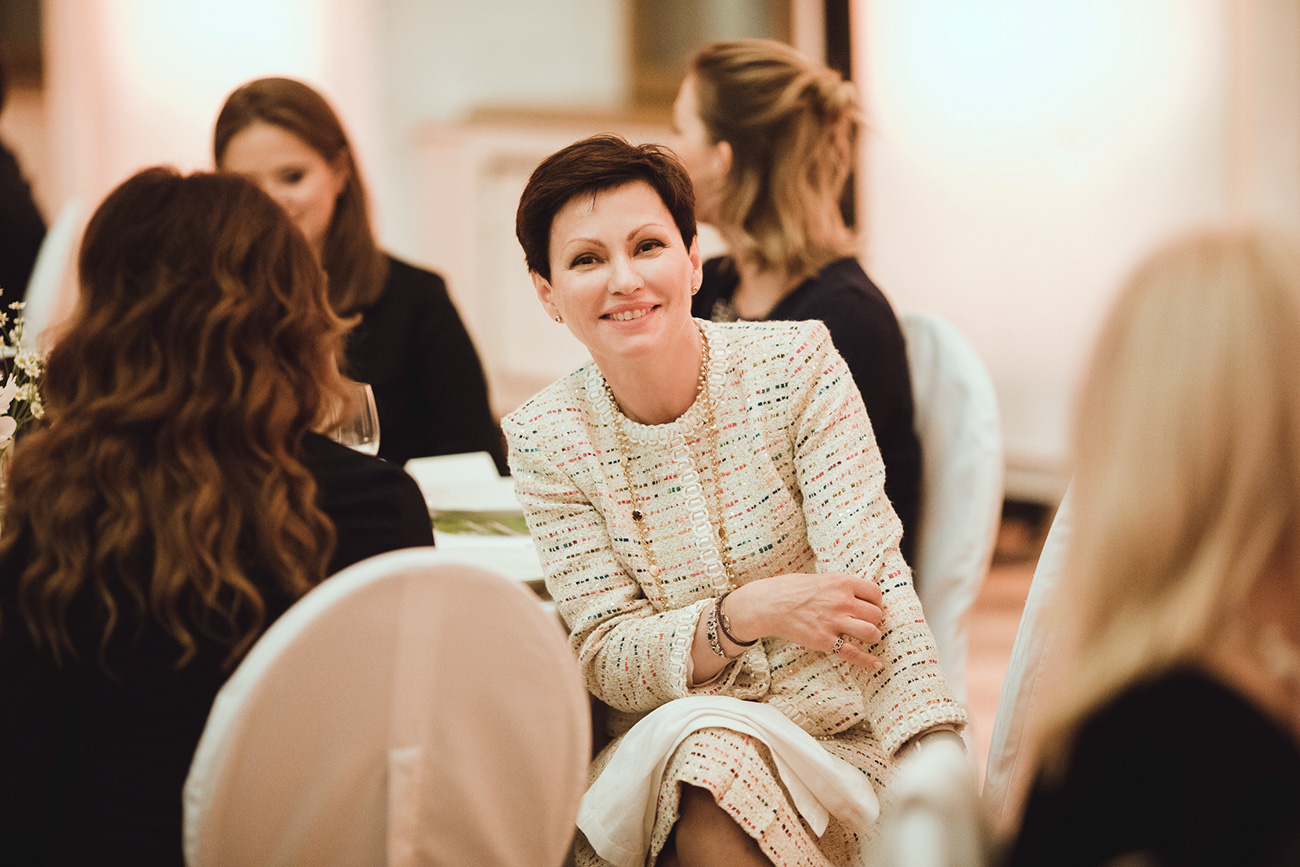Why did Sotheby’s bring a millionaires' landing force to the USSR?

Irina Stepanova: 'The official press did not know how to react to that landing party of millionaires.'
Press PhotoIn July 1988, Sotheby's held its first and last auction in Russia, which was still the USSR at the time. The event has become a historic milestone in the West's discovery of contemporary Russian art. It put the name of Ilya Kabakov, Irina Nakhova, Grisha Bruskin, Ivan Chuikov, and many others on the international art map. Nineteen years later, Sotheby's opened an office in Moscow. Over the past 10 years, Russian collectors have spent more than $2.8 billion at its auctions.
Prices for contemporary Russian art were set for the first time
Sotheby’s conducted that landmark auction in 1988, yet it took almost 20 years before the company opened its office here. Why?
To begin with, the 1988 auction was an incredibly bold experiment for the modern Russian – still Soviet then - contemporary art market, in effect, its starting point. That auction for the first time set prices for many artists, who have since become an international success, whose works form part of museum collections all over the world and are now very expensive. For Sotheby's, it was very much an experiment too: We did not know what world we were entering and what we would discover there. Thus, that auction could be considered a starting point indeed. It was the first and so far the only auction we conducted in Russia.
From the early 2000s, an increasing number of Russian collectors began to take part in auctions all over the world. We saw that Russia lacked timely information about auctions, that we did not know our collectors and their interests and had no knowledge of which categories they wanted to develop in. That’s why we opened our office in Russia in 2007, when we realized that a boom was coming, and the interest among Russians would soon peak.
 The first Sotheby's auction in the Soviet Union, 1988. / Press Photo
The first Sotheby's auction in the Soviet Union, 1988. / Press Photo
And why didn't you hold any more auctions in Russia?
Holding an auction is a very costly process and the 1988 auction in Moscow was more of an exception. We did not expect that auctions in Russia would be held on a regular basis. By 2007, the situation on the global market changed dramatically: New York and London took center stage on the global auction scene, and we opened a rep office in Moscow. Of course, we would like to repeat the success of that Soviet auction in Russia and, perhaps, one day we will.
Suitcases full of cash
There are many stories of Russians arriving in London in the late 1990s with suitcases stuffed with cash for buying works of art. Was the opening of the Moscow office indirectly linked to those stories?
No, of course not. We too remember a lot of anecdotes but they had nothing to do with our decision. Many Russian collectors at the time did not have a bank account, that’s why they wanted to pay cash. But, allow me to reiterate, our decision was well-thought-out and all those anecdotes are no more than curiosity.
It was a natural, let's say, stage in the growth of the market and people and business, which was developing from scratch and which was discovering capitalist relations that it had only theoretical knowledge of from Marx's "Das Kapital."
What was the biggest amount of cash brought in a suitcase?
I cannot tell you, but it was a very significant amount, and the buyer sincerely believed that we at the Moscow office in 2007 could accept it and move it abroad.
It was a work of art acquired in New York at an Impressionists' auction. Of course, we resolved that situation and helped the client to open a bank account.
 "Clown" by Alexander Rodchenko showcased for the bidding of the 1st International Auction of Soviet Art organized by Sotheby's and Soviet Ministry of Culture. The International Trade Center, 1988. / Photo: Alexander Makarov/RIA Novosti
"Clown" by Alexander Rodchenko showcased for the bidding of the 1st International Auction of Soviet Art organized by Sotheby's and Soviet Ministry of Culture. The International Trade Center, 1988. / Photo: Alexander Makarov/RIA Novosti
Window into Europe for Russian artists
Going back to 1988, have any artefacts of that time survived till present?
I am a lucky owner of a catalog from that auction: One of the participants gave it to me as a present. You may recall how people in the USSR cherished books: nobody even thought of using that catalog as a reference material, as a working document. It was carefully stored, even wrapped in film.
For a Soviet person, it was an art album in which it was impossible to write any notes, that’s why neat stickers were added, where prices could be recorded in pencil so that they could then be easily removed. I remember seeing lists, enclosed in catalogs, with auction results written down in a neat handwriting. Generally speaking, this catalog is of extreme value since there was no Internet at the time and information was transmitted in unfathomable ways.
In the press, too, there was little information about the auction. I think the official press did not know how to react to that landing party of millionaires. Those were truly top clients from America and the UK, who had been prepared especially. They were promised an interesting program. Everything was very grand, it was a black-tie event: At the time it was still customary to come to important auctions in tuxedos, evening gowns, and diamonds. Can you picture that meeting of the two worlds that took place at the Hammer Center?!
….of the Russian underground and Western bourgeoisie?
But I would like to point out that the artists recovered their poise quite quickly and their interviews on subsequent days were very relaxed, bold, even ambitious. That was when the "window" to Europe was opened again and they saw themselves in a new world.
 Irina Stepanova: 'We are now seeing a new wave of interest in Russian things.' / Press Photo
Irina Stepanova: 'We are now seeing a new wave of interest in Russian things.' / Press Photo
Nevertheless, after that auction – although it was a success, with prices of up to $500,000 - Sotheby’s did not start working with contemporary Russian art straight away. Why not?
No, it did not. As I said earlier, that auction was an experiment for us and a discovery of Russia for us too. There was no market for that art at the time. Whereas we as a commercial structure react to the market, to demand. We believe that the demand and the market emerged only in 2007, that was when the company decided to open an office in Russia.
Did Sotheby’s begin selling contemporary Russian art at the same time as it opened its office here?
Yes, in 2007 we held the first auction of contemporary Russian art, and began to include contemporary artists in our Russian auctions. Incidentally, many of them were presented at the 1988 auction.
A revival in interest for Russian art
How has the number of Russian clients at global auctions grown over the past decade?
The number of Russian participants grew by 67 percent in the first years alone. In general, Russian collectors participate in our auctions in different categories - from Old Masters to design to contemporary art. In total, they spent more than $2.8 billion over 10 years.
It’s often said that national art presents an interest mainly to members of that nation in question. To what extent is Russian art of interest to Western collectors at auctions?
We are now seeing a new wave of interest in Russian things. Furthermore, in addition to Russians, we have always had buyers from America, Germany, France. These are serious collectors, who buy, among other things, 19th century Russian paintings, not to mention applied arts - Faberge and other masters, as well as icons. Those are international categories. After the Bolshevik Revolution and World War I, many objects of art were taken to America. That’s why there is a lively market in that category there.
Read more: Russian Art Week: Top 7 lots up for grabs at Christie’s auction house
If using any of Russia Beyond's content, partly or in full, always provide an active hyperlink to the original material.
Subscribe
to our newsletter!
Get the week's best stories straight to your inbox
